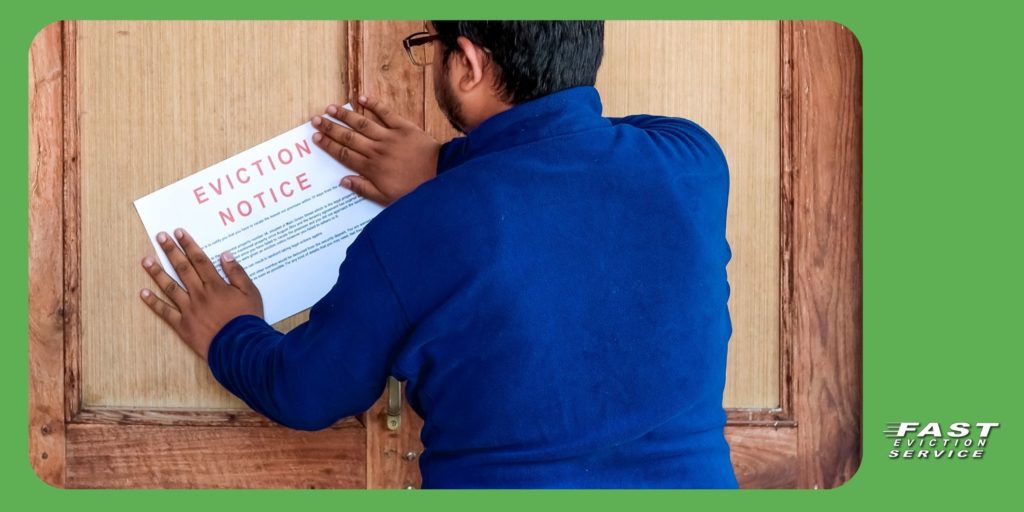Updated 11/26/24
As a landlord, managing rental properties can be rewarding, but it’s not without challenges. One of the most difficult situations is dealing with unwanted tenants. Whether it’s due to unpaid rent, disruptive behavior, or a strained landlord-tenant relationship, these situations require careful navigation to ensure a fair and legal resolution. But before jumping straight to eviction, it’s worth exploring alternative approaches to address the issue and potentially rebuild the relationship. After all, an eviction is time-consuming, costly, and often stressful for all parties involved.
In this article, we’ll explore practical strategies for handling unwanted tenants, focusing on fostering communication and offering solutions before considering more drastic measures.

Table of Contents
- Understanding the Root of the Problem
- Open Communication: The First Step
- Offering Practical Solutions
- When to Consider Legal Action
- Frequently Asked Questions
Understanding the Root of the Problem
Dealing with an unwanted tenant starts with identifying the cause of the issue. An “unwanted tenant” doesn’t necessarily mean a bad person; it could simply mean a mismatch in expectations or circumstances.
Some common reasons landlords find themselves in this situation include:
- Late or missed rent payments
- Complaints from neighbors about noise or disruptive behavior
- Damage to the property beyond normal wear and tear
- Refusal to follow lease terms
Understanding these issues can guide how you approach the situation. For example, if the tenant is late on rent due to financial hardship, offering a payment plan might resolve the issue. On the other hand, recurring behavioral problems may require a more structured intervention.
Open Communication: The First Step
When asking, “How do you get rid of unwanted tenants?” the answer might be as simple as initiating a conversation. Often, miscommunication or assumptions escalate minor issues into major conflicts. A respectful, transparent dialogue can uncover the root of the problem and pave the way for solutions.
Begin with a calm and private meeting where you outline your concerns. Use “I” statements, such as “I’ve noticed the rent hasn’t been paid for two months” rather than accusatory phrases. This approach reduces defensiveness and encourages collaboration.
During the discussion, ask open-ended questions to understand the tenant’s perspective. For example:
- “Is there a specific reason for the delay in rent?”
- “Are there any challenges you’re currently facing?”
Listening to their concerns demonstrates empathy and may uncover opportunities for compromise. If the relationship feels strained, consider bringing in a neutral third party, such as a property manager or mediator, to facilitate the discussion.
Offering Practical Solutions
Once the issues are clear, the next step is to offer realistic and actionable solutions. This not only helps in resolving the current situation but also shows tenants that you’re willing to work with them, rather than against them.
Payment Plans for Financial Issues
If the tenant is struggling financially, suggest a temporary payment plan that allows them to catch up on overdue rent in manageable increments. Document this agreement clearly, outlining payment amounts, deadlines, and consequences for non-compliance.
Lease Amendments
If the tenant struggles to adhere to certain lease terms, consider modifying them slightly to accommodate their situation. For instance, if frequent complaints stem from a pet, introducing a pet policy with clear rules and fees could be a middle ground.
Relocation Assistance
In some cases, it might be mutually beneficial for the tenant to move out voluntarily. You could offer assistance, such as covering a portion of moving expenses or waiving the last month’s rent, to encourage cooperation. While this might feel like an additional cost, it can save you from the lengthy process of removing unwanted tenants through eviction.
When to Consider Legal Action
Despite your best efforts, there are situations where a tenant remains non-compliant, making legal action unavoidable. Evictions should always be your last resort, as they require strict adherence to local laws and can damage relationships.
Before proceeding, review the following:
- Documentation: Maintain detailed records of all communications, notices, and attempts to resolve the issue.
- Legal Notices: Serve written warnings or pay-or-quit notices as required by your jurisdiction.
- Professional Advice: Consult a real estate attorney to ensure compliance with state and local laws.
While eviction may seem like the quickest way to regain control of your property, consider the long-term impact on your reputation and stress levels. Whenever possible, prioritize solutions that maintain professionalism and dignity for both parties.
Frequently Asked Questions
How do you get rid of unwanted tenants without eviction?
Start by addressing the issue directly with open communication. Offer solutions like payment plans, lease modifications, or relocation assistance. If these efforts fail, consult a mediator before considering legal action.
What’s the best way to approach an unwanted tenant?
Always approach the tenant calmly and respectfully. Arrange a private meeting to discuss concerns, and focus on solutions rather than blame. Listening to their side often leads to cooperative outcomes.
Can I remove unwanted tenants by changing the locks or shutting off utilities?
No. These actions are considered illegal in most jurisdictions and can result in severe penalties. Always follow the legal eviction process if necessary.
By focusing on communication and offering alternatives, landlords can often resolve issues with unwanted tenants amicably. Not only does this approach save time and money, but it also fosters better relationships and preserves the integrity of your rental business. Remember, every tenant relationship is an opportunity to improve your skills as a landlord and property manager.



